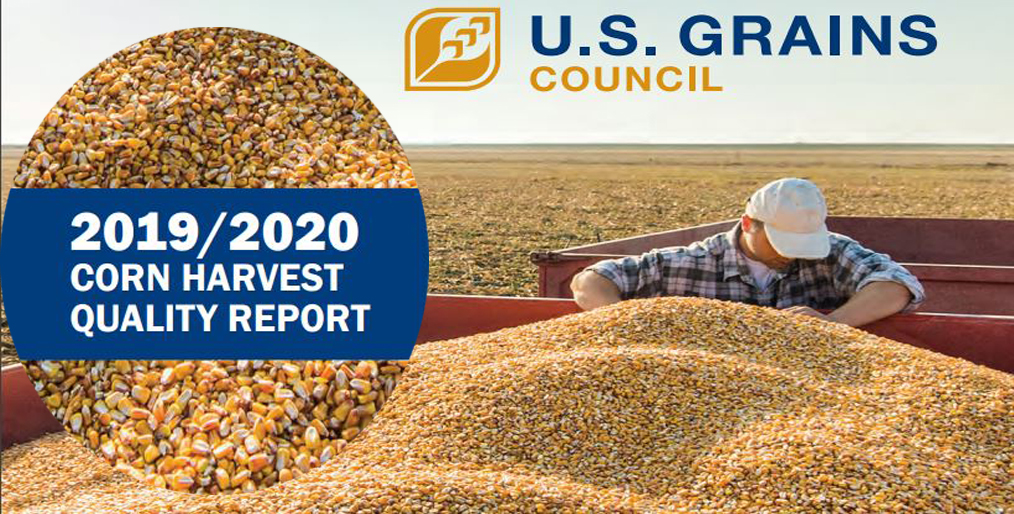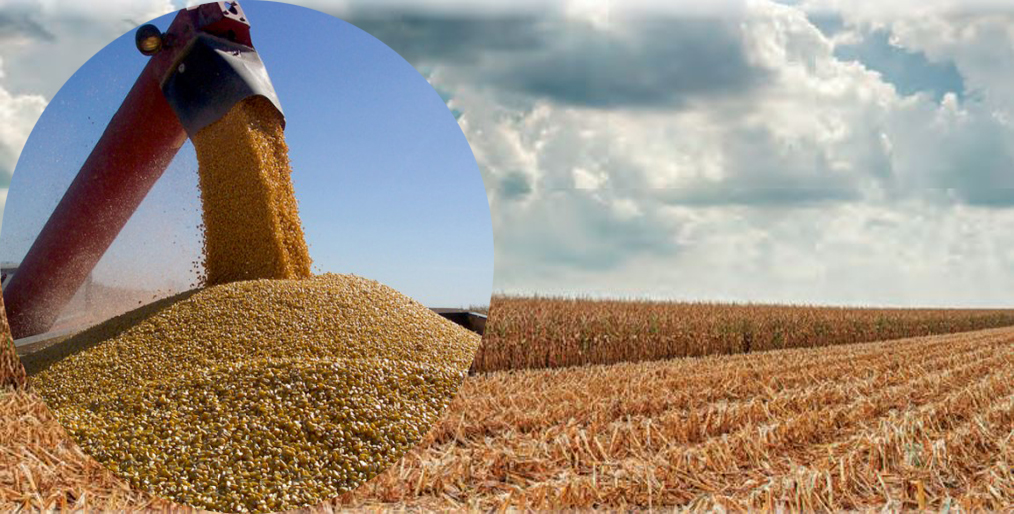
[caption id="attachment_3560" align="aligncenter" width="1014"] Picture: Collected[/caption]
GFMM desk: The U.S. Grains Council (USGC) is pleased to present findings from its ninth annual corn quality survey in this 2019/2020 Corn Harvest Quality Report.
The 2019 growing season began with delayed planting due to wet weather conditions in April and May. Using the date when 50 percent of the corn crop is planted as a benchmark, this year’s corn crop was the latest in the last 40 years. Despite generally favorable conditions during the remainder of the growing season, average yields are expected to be lower compared to each of the previous three crops. Late planting and wet weather conditions in October also delayed harvest. In recent memory, only the 1992 and 2009 crops reached the 50-percent-harvested benchmark later than the 2019 crop.
Despite these challenges, the Council projects this year’s crop to be the sixth-largest U.S. corn crop on record at 347.0 million metric tons (13,661 million bushels). This year’s crop is following the three largest and highest-yielding corn crops in U.S. history. The ample supply provided by these consecutive large crops allows the United States to remain the world’s leading corn exporter and accounts for an estimated 28.1 percent of global corn exports during the marketing year.
[caption id="attachment_3561" align="aligncenter" width="1014"]
Picture: Collected[/caption]
GFMM desk: The U.S. Grains Council (USGC) is pleased to present findings from its ninth annual corn quality survey in this 2019/2020 Corn Harvest Quality Report.
The 2019 growing season began with delayed planting due to wet weather conditions in April and May. Using the date when 50 percent of the corn crop is planted as a benchmark, this year’s corn crop was the latest in the last 40 years. Despite generally favorable conditions during the remainder of the growing season, average yields are expected to be lower compared to each of the previous three crops. Late planting and wet weather conditions in October also delayed harvest. In recent memory, only the 1992 and 2009 crops reached the 50-percent-harvested benchmark later than the 2019 crop.
Despite these challenges, the Council projects this year’s crop to be the sixth-largest U.S. corn crop on record at 347.0 million metric tons (13,661 million bushels). This year’s crop is following the three largest and highest-yielding corn crops in U.S. history. The ample supply provided by these consecutive large crops allows the United States to remain the world’s leading corn exporter and accounts for an estimated 28.1 percent of global corn exports during the marketing year.
[caption id="attachment_3561" align="aligncenter" width="1014"] File Picture[/caption]
The overall quality of the 2019 crop was impacted by late planting, delayed maturation and kernel filling and late harvest conditions as reflected in high corn moisture and low density. The high moisture led to the need for more heated-air drying, which increases the potential for stress cracking. The average aggregate quality of the representative samples tested for the U.S. Grains Council 2019/2020 Corn Harvest Quality Report (2019/2020 Harvest Report) was better than the grade factor requirements for U.S. No. 1 grade corn, indicating an abundant amount of good quality corn is entering the marketing channel from the 2019 U.S. crop. The report also showed that 54.6% of the samples met the grade factor requirements for U.S. No. 1 grade, and 81.7% met the grade factor requirements for U.S. No. 2 corn. Relative to each quality factor’s average of the previous five crops (5YA1), the 2019 U.S. corn crop is entering the marketing channel with lower average test weight, whole kernels and protein concentration; and higher broken corn and foreign material (BCFM), moisture, total damage, stress cracks and oil concentration.
The report is based on 623 samples collected from inbound farm-originating trucks at harvest. The full report is here.
Source: Online/SZK
File Picture[/caption]
The overall quality of the 2019 crop was impacted by late planting, delayed maturation and kernel filling and late harvest conditions as reflected in high corn moisture and low density. The high moisture led to the need for more heated-air drying, which increases the potential for stress cracking. The average aggregate quality of the representative samples tested for the U.S. Grains Council 2019/2020 Corn Harvest Quality Report (2019/2020 Harvest Report) was better than the grade factor requirements for U.S. No. 1 grade corn, indicating an abundant amount of good quality corn is entering the marketing channel from the 2019 U.S. crop. The report also showed that 54.6% of the samples met the grade factor requirements for U.S. No. 1 grade, and 81.7% met the grade factor requirements for U.S. No. 2 corn. Relative to each quality factor’s average of the previous five crops (5YA1), the 2019 U.S. corn crop is entering the marketing channel with lower average test weight, whole kernels and protein concentration; and higher broken corn and foreign material (BCFM), moisture, total damage, stress cracks and oil concentration.
The report is based on 623 samples collected from inbound farm-originating trucks at harvest. The full report is here.
Source: Online/SZK
Comment Now